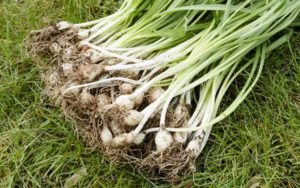Menu
The days are getting noticeably longer now, particularly on sunny days, and the countdown to the first day of Spring ticks on apace! February feels like the start of the gardening year (for me at least) because it’s usually the first month I will sow any seeds. February is also usually the month when I will have a proper sort out and clean of the greenhouse, as we’ll probably get a bright, cold day when it will be nice to be outside. Of course, remember to keep your birdfeeders and water trays clean and topped up, as it’s still a tough month for our feathered garden helpers!
The days are getting noticeably longer now, particularly on sunny days, and the countdown to the first day of Spring ticks on apace! February feels like the start of the gardening year (for me at least) because it’s usually the first month I will sow any seeds. February is also usually the month when I will have a proper sort out and clean of the greenhouse, as we’ll probably get a bright, cold day when it will be nice to be outside. Of course, remember to keep your birdfeeders and water trays clean and topped up, as it’s still a tough month for our feathered garden helpers!

Time to dig out those seed trays and start sowing in earnest. I leave my sweet peas until this time of year (I tried the ‘Monty method’ of planting in October but they just got too leggy and needed potting on before Christmas!). It’s also time to start thinking about summer bedding (cosmos, lobelia, snapdragons etc), best sown and left in a sunny but frost-free place. Tender salad crops like peppers and tomatoes can also be sown now but will probably need to sit on a sunny windowsill (or heated propagator if you have one) to get them started. It’s also a good time to start thinking about your summer bulbs; agapanthus, lilies and gloxinias will do well planted in pots but kept indoors until the weather warms up a bit more. And, if you’re a potato grower, time to start chitting your first earlies by standing them in trays (or empty egg boxes) on a sunny windowsill.
You can find our general advice on sowing seeds here and our seed sowing calendars here.

If you can get your hands on (not literally!) some well-rotted manure, now is the time to fork it lightly into your beds and vegetable plot. Don’t go mad (over-feeding plants can result in lots of fleshy green growth and fewer fruits or flowers), it’s just a gentle boost for your soil. Your roses will love it! Fruit trees and bushes will probably benefit from a sprinkling of potash feed around their base at this of year, as it promotes fruiting.
This article from the Gardening Channel weighs up the pros and cons of feeding your soil and gives some handy tips on how to tell if your plants need extra fertilizing.

The easiest way to increase your stock of clump-forming plants is to dig them up and divide them; replant one piece back in the original hole and plant the others around the garden. At this time of year, snowdrops can be divided in this way, ‘in the green’, still in flower or after they have flowered. Winter aconites can be divided after flowering too. Now is also a good time to divide grasses and other herbaceous perennials (like peonies, hardy chrysanthemums and Salvias) to make new plants for free.
Find our tips on dividing herbaceous perennials here.

February is your last chance to prune most plants before they will start coming into growth again so get to your fruit trees and bushes (if you haven’t already). The same is also true of ornamental grasses; great to have left them for their structure and seed heads over the winter but now’s the time to cut or pull out the old growth to make room for new shoots. (See our earlier article on caring for grasses if you need some further advice.)
Pruning wisteria now will encourage flowering in the spring; cut it back to three buds from the base of a shoot. Plants that have flowered over the winter (heathers, mahonia or winter jasmine, for example) will benefit from a trim to tidy them up once the flowers are over. (With heathers, as with lavender, remember not to cut back into old stem as its unlikely to regrow from there). And, if you haven’t tidied up climbers like ivy and Virginia creeper already, do that now, before the birds think about nesting in them.
If you haven’t pruned your apple or pear trees yet, you should get on and do so as soon as you can. Find our tips on how to here.

At time of writing, the long-range forecast for February in our area is unsettled but rainy and with temperatures generally at or above average for the time of year, so it’s not looking likely that we’ll get drops of snow or heavy frosts. However, just in case we do, check any fleece or insulation you’ve placed around tender plants to make sure it’s still doing its job. If a cold snap is forecast, think about protecting any early fruit blossoms (particularly stone fruits like peaches) from the weather. Covering strawberry plants with cloches will also help you get an earlier crop.
If we do get a decent snow fall, knock it off the branches of shrubs and conifers to prevent them snapping under the weight. Check if any plants have been loosened by the wind or cold-action and firm them back in to prevent root damage.
Spring is just around the corner now!
Further reading this February:
Don’t forget your Valentine’s Day gifts
We love snowdrops!
Tiptoe among the primroses
Be ready for Spring
Roses are not just for Valentine’s Day!
Hambrooks garden design, landscaping & garden maintenance throughout Hampshire for over 50 years.

